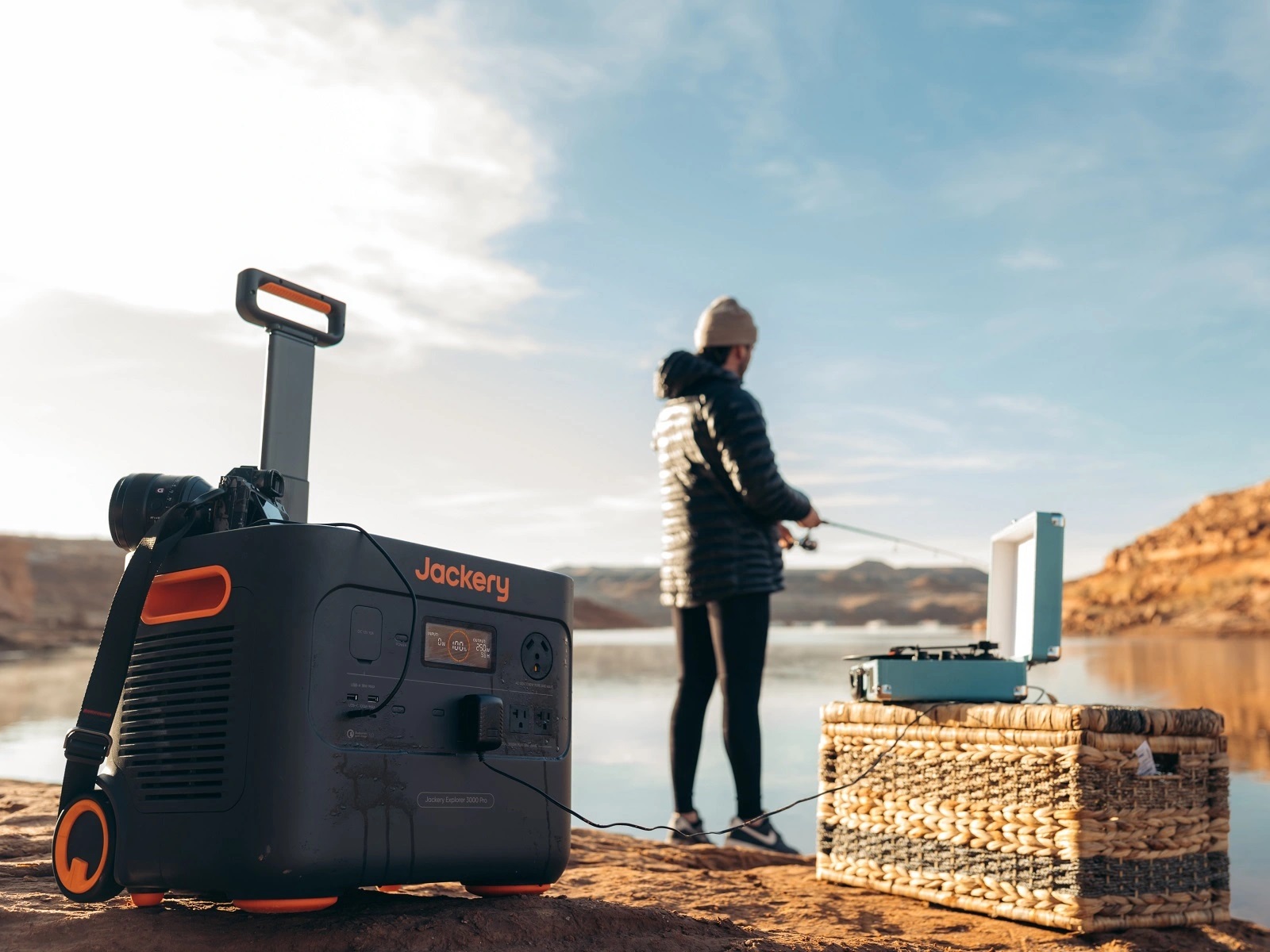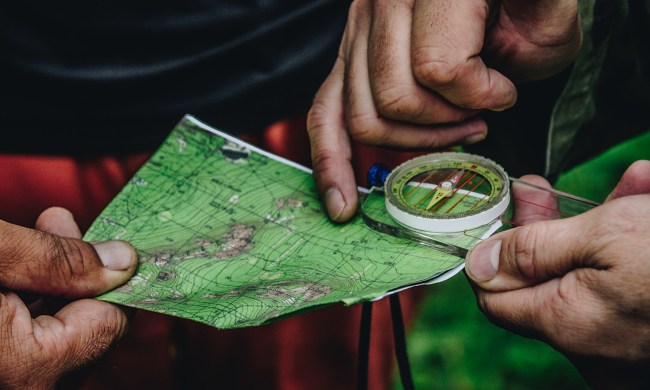We’ve all gone a little tech crazy in the last 20 years. Most of us won’t or can’t leave home without at least our smartphone, a tablet, and maybe a laptop. And that’s often the bare minimum. All that tech — even from a handful of small gadgets — can add up to a serious demand for power. Whether you’re a daily commuter, you love to camp with your gadgets, or you’re worried about reliable backup power in a blackout, you need some way to keep your devices humming.
That’s where a portable power station (sometimes called a “solar generator,” “portable generator,” or “battery generator”) comes in. These beefy units offer on-demand backup power wherever and whenever you need it. But they’re notoriously tricky to shop for, thanks to a long list of tech specs and features every new buyer is forced to compare. We’re here to help with a breakdown of how to shop for your own portable battery or power station, even if you don’t happen to have an advanced electrical engineering degree.
Watt-hours, LiFePO4 cells, peak power, MPPT charge controllers … what does it all mean?

Before you start shopping for portable batteries, it’s helpful to understand a few key terms.
Watts vs. watt-hours
These two terms are the most important when understanding how electricity works and how to shop for the best portable power station for you. Watts are a measure of power and the rate at which energy is consumed (or produced). Watt-hours measure the amount of energy consumed over a given period.
Think of it with this imperfect analogy. Watts are like the horsepower in a vehicle’s engine. The more horsepower the engine has, the more work it’s capable of doing at any one time. Watt-hours are like the size of your vehicle’s fuel tank. The larger the tank, the more range it has or the longer it’s capable of running before refueling or recharging.
Continuous power vs. peak power
As the term implies, continuous power (measured in watts) refers to the amount of power a station can provide on a continuous basis. Peak power (sometimes called surge power), also measured in watts, is a measure of the maximum amount of power that a station can deliver in a quick surge. This is important for some appliances like portable air conditioners and refrigerators that require a large amount of power to start. If a power station’s peak power can’t handle whatever you’re plugging into it, that power station will not be able to meet your power demands.
Reputable manufacturers label each of their power stations with these figures. For example, according to its website, Bluetti’s beefy offers a sizable “2,200 watts AC Pure Sine Wave Inverter (4,800 watts surge).” The first figure (2,200 watts) reflects its continuous power capability, while the second (4,800 watts) is its peak/surge power capability. So, this unit would be able to run almost any power-hungry device or residential appliance plugged into it, including a pressure cooker (900 watts), an air conditioner (1800 watts), or even a hair dryer (2,000 watts), as long as those devices don’t demand a surge of more than 4,800 watts to start.
Bottom line: Find the most power-hungry device that you need to run. Things like air conditioners, small space heaters, hair dryers, and toasters are a good place to start. Check the cable (the continuous and peak power figures are often printed right on the device or power cord) or the owner’s manual for its power demands. Then, find a portable power station that exceeds those figures by at least 10%.
Portable power stations vs. portable power banks
There’s no industry standard terminology on this. But, in general, portable power stations refer to the larger (typically 200 watt-hours or more) units designed for serious power backup. These are the kinds you would more likely take camping or use for power backup when your home electricity goes out. Because of their heft, most have a carry handle, which is often an easy way to distinguish a station from a bank.
Portable power banks are smaller backup units that can fit in the palm of your hand, typically with no more than a 100-watt-hour capacity. If you’re a commuter, you probably have one of these in your messenger bag or purse to keep your phone or tablet topped up throughout the day.
LiFePO4 vs. lithium-ion batteries
Until recently, lithium-ion batteries were the standard for almost every portable generator on the market. But, in the last few years, most manufacturers are moving toward LiFePO4 (lithium-iron phosphate) batteries. At least 20,000-word technical posts have been written on the differences between these two technologies.
But, in short, lithium-ion batteries are lighter and cheaper, while LiFePO4 models last longer and have a wider operating temperature range, so they’re safer to use in extreme cold or heat. If you can afford the latter, we highly recommend it. Most LiFePO4 batteries are good for a decade or more and can survive over a thousand recharge cycles before needing to be replaced.
How long do portable power stations last?
Typically, portable power stations can last anywhere from 5 to 15 years. However, the number of years can vary significantly based on several factors, such as battery type, usage (frequent and deep discharges can shorten battery life), maintenance, and brand and quality.
Some newer models, especially those using LiFePO4 batteries, are specifically designed to last over 10 years with regular use. Other benefits of LifePO4 batteries, not mentioned above include:
- They can typically last 2,000 to 8,000 cycles, which is significantly longer than other battery types.
- They can deliver high amounts of power quickly.
- They contain no harmful heavy metals.
- They maintain a stable voltage throughout the discharge cycle.
How much power do I need in a portable power station?

This is the most important question to answer when shopping for the best portable power station or the best portable generator for you, and it’s also the trickiest. Our simplest recommendations are:
- Small portable power station (at least 300 watt-hours): Sufficient for a family of four looking to camp for a long weekend with a typical amount of electronics (one smartphone each, one to two tablets total, and one to two laptops total).
- Medium-sized portable power station (at least 750 watt-hours): Sufficient for a family of four looking to weekend camp with all of the above, plus an additional tablet/laptop and even more electronics like a digital camera or small television.
- Large portable power station (at least 1,500 watt-hours): These stations are more than capable of backup for everything a medium-sized model can handle. Plus, they’re typically strong enough to run most small household kitchen appliances, blenders, pressure cookers, and even space heaters (for a limited time).
- Extra-large portable power stations (at least 3,000 watt-hours): These can run everything a large model can, and are plenty powerful enough to keep the most essential devices and appliances in your home running in an emergency backup situation.
Of course, the only way to know for sure is to take inventory of all the devices you’ll be using, and then plug them into an energy usage calculator.
What features should I look for in a portable power station (or solar generator)?

Most portable power stations sold in the last five years offer the same general feature set. The “guts” of each station consist of either a rechargeable lithium-ion or LiFePO4 battery cell. Most include a selection of common ports: AC, USB (USB-A and/or USB-C), and 12 volts, with larger units offering more ports. All are rechargeable via a standard wall outlet, while most also offer 12 volts (i.e., a traditional cigarette lighter-style) and solar inputs. The best can be recharged using two different methods simultaneously.
The two key features that set most portable power stations apart are:
- Capacity: This is the single biggest differentiator in price. The more watt-hours a power station has, the more expensive it will be.
- Display: Some stations offer very basic display screens that show the battery’s remaining capacity as a simple percentage and maybe the time remaining to charge or deplete the battery. More premium stations offer robust color displays that indicate which ports are in use, the general battery health, and even temperature monitors to warn when the battery is too cold or is overheating.
How much should I spend on a portable power station?

It’s tempting to want to rush out and buy the best portable power station you can afford. If you have the money, by all means, feel free. But there’s really no need to buy more power stations than you actually need. We recommend taking a hard look at your energy needs at home and buying a model that best suits your daily energy use.
Prices vary widely from just a few hundred dollars (for an off-brand 300-watt model) to thousands of dollars for top-of-the-line branded power stations capable of backing up an entire house for days or even a week. As a general rule, expect to pay about $1 per watt-hour. Lesser-known brands may be a little cheaper, while well-known branded models are often a little more per Wh. Goal Zero’s Yeti 500X boasts a 505-watt-hour capacity, for example, and is priced at under $600. The delivers a 1,534-watt-hour capacity and runs around $1,700 (less on sale).
In the end, as with almost anything, there is no one best portable power station. It’s all about what’s best for you. Whatever your power demands, there’s a model out there with the perfect capacity, weight, feature set, and price just for you.



